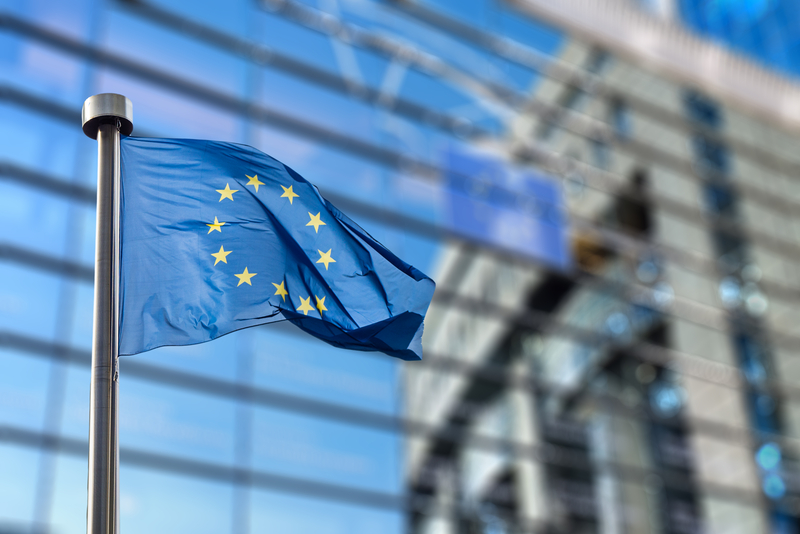
What is the new European framework about?
The European Directive on ITS aims to promote coordinated deployment of intelligent transport systems across Europe. It provides a framework for developing and implementing technologies to improve the efficiency, safety, and sustainability of transportation systems within the European Union (EU).
On 23 October 2023, the Council of Ministers of the EU adopted the long-awaited revised ITS directive following the agreement of the European Parliament. This process was initiated in 2021 by the European Commission after an extensive consultation period with the public and private actors, including Ertico-ITS Europe.
The new European legislation should ensure that ITS applications in the field of road transport enable seamless integration with other modes of transport, such as rail or active mobility, thus facilitating a shift to those modes whenever possible, to improve efficiency and accessibility.
Why is this relevant for Ertico and its partners?
Innovation and ITS is the DNA of Ertico. Our public-private European partnership was founded in 1991 at the initiative of 15 industry leaders and the European Commission to fill the gap between research and deployment of transport & mobility services. ‘Connecting the dots’ across eight sectors across the ecosystem is our motto.
ITS is making mobility smarter, safer, as well as more efficient and sustainable. It is all about information and communication technologies, data sharing and synchronisation between transport infrastructures, service providers and users of such infrastructure. We talk about connected and cooperative mobility between vehicles and roads, data sharing on traffic situations, road safety, travel, electric vehicle (EV) charging, journey planners, eCall, automated driving - not only roads but true multimodality.
A smarter and interoperable transport system allows more effective management of traffic and mobility across transport modes, facilitating combining the most sustainable modes of transport. For instance, mobile apps are proposing travellers different transport options to get to their destination. Also, transport operators share their insights with authorities for better mobility management decisions. In turn, this will reduce congestion and bring down emissions.
Our activities in the broader community are in good sync with the ITS framework. Examples:
Traffic management interactive and enhanced traffic management, data sharing and real-time traffic information, including the RTTI Delegated Regulation: TM 2.0
Map data and cooperation between map makers, road authorities and public authorities: TN-ITS
Road safety data sharing via safety-related traffic information exchange between OEMs, service providers, road authorities and other: Data for Road Safety (DFRS)
As part of preparing and deploying the European Mobility Data Space, we contribute to European co-funded partnership projects, including
PrepDSpace4Mobility, and the newly launched project “deployEMDS”. Our dynamic involvement in Napcore, the federation of national access points is another key project that contributes to a seamless one-stop-shop of data availability and data sharing.
Ertico also continues its dynamic cooperation with the MaaS Alliance and TISA where the ITS directive and its delegated acts are an important ingredient
What are the main objectives of this EU initiative?
The main objectives of the European ITS Directive include:
Interoperability: Ensuring that ITS systems and services are interoperable across different Member States and modes of transport, such as road, rail, waterway, and air. Technology neutrality is a key point here.
Continuity and consistency: Promoting a consistent approach to ITS deployment to avoid fragmentation and ensure the continuity of services when travelling across borders.
Standardisation: Encouraging the use of common standards and protocols to enable seamless communication and cooperation between various ITS components.
Deployment of key services: Defining specific ITS services that should be deployed, such as real-time traffic information, multimodal data sharing, eCall, booking and ticketing, etc.
Data protection and privacy: Addressing issues related to data protection and privacy when collecting and processing data through ITS systems.
Openness and competition: Promoting open and competitive markets for ITS services and solutions.
The ultimate goal is to improve the efficiency of mobility while reducing congestion and environmental impacts. At the same time, the legislation fosters innovation in the sector by encouraging the development and deployment of advanced technologies.
Any changes compared to the initial Directive of 2010?
The adopted text contains a serious uplift, calling it a revision of the Directive of 7 July 2010. There is a growing need to make more data available and to mandate better use of data in making transport chains more sustainable, secure, efficient and resilient. Such things are best coordinated at the EU level, alongside other initiatives aimed at harmonising and facilitating data sharing in the mobility, transport and logistics sectors through a multimodal perspective, such as the common European mobility data space.
Based on surveys and studies, the European Commission concludes that in many Member States, national applications of intelligent transport systems and services were already being deployed in the road transport sector. However, despite improvements since its adoption in 2010, the evaluation of the ITS Directive found persistent shortcomings, leading to remaining fragmented and uncoordinated deployment and lack of geographical continuity of ITS services throughout the Union and at its external borders.
Also, despite National Access Points (NAP) being operated in all Member States, there is still a need to improve the availability of data concerning many data types that are deemed crucial to support the development of essential services providing the necessary information to the end users.
The new text takes some ingredients from the proposed (not adopted) C-ITS framework in the past. C-ITS use technologies that enable road vehicles to communicate with each other and with roadside infrastructure including traffic signals and introduces a common European C-ITS trust model to establish a relation of trust between all C-ITS stations, regardless of the communication technologies used.
The text invites the Commission to find solutions for the blocking eCall situation when older networks 2G/3G are being switched off and replaced by 5G and beyond (packet switched). There is no backward compatibility among these technologies so solutions need to be found for the legacy fleet and public emergency centres equipped with 2G/3G and for new vehicles that need to be type-approved with lasting technology systems.
The revised framework serves as a stepping-stone towards the establishment of the common European Mobility Data Space (a Communication on this from the Commission is expected in November), a transformative development for the broader mobility landscape. It extends the scope of previous rules and covers emerging solutions and services including multimodal information, booking and ticketing services, applications facilitating the booking of journeys, combining public transport with car – and bike-sharing services, as well as communication between vehicles and infrastructure (V2I/V2X) and automated mobility.
The need for digitisation of crucial information, including speed limits, roadworks, and multimodal access nodes, alongside the provision of delivering essential services, including road safety information, should result in broader coverage of real-time data and more precise intelligent speed assistance systems for transport users.
The Directive specifies the essential types of data, including access conditions for tunnels and bridges, speed limits, traffic circulation plans, permanent access restrictions, road closures, roadworks, temporary traffic management measures, and critical services such as road safety-related traffic information services, to be made available across the Union, as outlined in the annexes.
What is the link between the European call for more sustainable finance and ITS?
The EU’s Green Deal comprises the so-called Taxonomy Regulation of 2020. This financial legislation aims to facilitate and incentivise sustainable investments. It introduces ‘technological screening criteria’ to define what an environmentally sustainable economic activity actually is. While we are confident that ITS contributes to the greening of the economy, yet the European framework does not recognise ITS as a screening criterion.
Ertico, together with CEDR (European Directors of Roads), Asecap (association of tolled road infrastructures), IRF (International Road Federation) and the DSRC Interest Group have shared their concerns with the Commission. We continue to be vocal on the topic, “In our view the taxonomy, as it currently stands, creates silos based on individual economic activities, whilst transport policy requires balancing transport modes into more holistic mobility concepts”.
Recital 49 of the Taxonomy and recital 3 of the revised ITS directive clearly pave the way for a Commission initiative and recognition of ITS as a tool for safe, smart and sustainable transport and mobility services. As Taxonomy is interlinked with public procurement (Recital 43) and as ITS activities are predominately addressing activities procured and financed by public funding, we find this as a serious threat to the activities of the entire ITS sector. Harm to the sector is also inflicted by the fact that investors are (and should indeed not) going to channel funding into activities that are not substantially contributing to the environmental objectives of the EU Taxonomy.
What are the next steps?
The new Directive retains the framework character of the initial one, including various technical interventions by way of implementing and delegated acts. It contains an implementation programme covering at least the next five years, and a precise geographical scope of road network for which reusable data must be available as a baseline requirement. By way of delegated acts, the Commission may further complement certain aspects of this implementation programme as it has done with the 2010 version of this framework Directive.
Ertico looks forward to the publication of the text in the coming weeks and will assist the European Commission and the Member States in their implementation of the rules into national law within the next 2 years. We are also actively in good dialogue with our colleagues from the national ITS organisations who deliver with their members ITS in their territories. 1+1=3 through a well-oiled cooperation and information exchange.
This article was first published at erticonetwork.com
ABOUT THE AUTHOR:
Joost Vantomme is CEO of Ertico – ITS Europe












